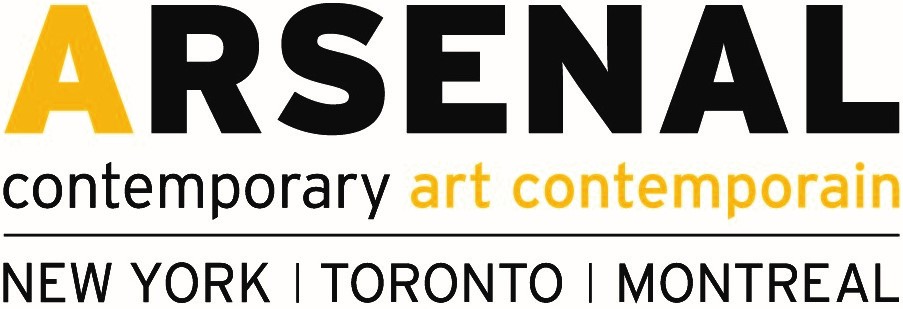In the Studio with Mathieu Grenier
INTERVIEW
Published Jan 26, 2021
You tend to work at a large scale, how does this impact your work conceptually?
I tend to conceptualize my work in terms of space, I find that being immersed in a work is the kind of experience I find most interesting. When visualizing a new work or body of works, I think of laying out a grid in a given space. It’s like working with rhythms, punctuations, tones and silence. It partially has to do with contemplation, which is a state of mind and being I don’t get to be in as much as I would like to on a daily basis. Working in large scale implies a process of working in macro and micro. You have to adjust your body and where you stand in the space with the work to apprehend the process. Sometimes it’s impossible to have a step back and you have to wait until you install in the gallery to finally grasp the work. Working with 3D software becomes quite handy in these cases.
You talk about how display technologies influence our perception of image and space, do you consider the cyanotype to be one of these technologies?
I don’t think of cyanotypes as a display technology but rather a technology that allows image making. With its own parameters and limitations, cyanotypes are pretty versatile in terms of process. You can apply it to many different types of surfaces and materials, and it will define how it’s going to be displayed. Every technological medium has its own way of conveying an experience and it comes with an affect that is tied to a specific history. In that regard, I read a pretty thoughtful IG post from Jessica Eaton yesterday that made me think of how artists relate to technology that are just recently or long gone out of use:
“A beautiful thing about technological mediums is that technique and tools are so readily abandoned for cheaper, faster efficiency that what has been left behind still has a lot of potential, especially once free of outcome expectations and deliverables.”
When I talk about display technologies, and their influence on our perception of image and space, I’m thinking about a multi layered virtuality, reality, materiality and immateriality. Social media and screen-based technologies define us more than we can possibly imagine right now and part of it has to do with how we compartmentalize ourselves through computers and society. I think a lot about place holders of images in my photography work, taking lots of photos of projection rooms, exhibition spaces, advertising boards, T.V., computers and phones, etc. I think we project ourselves in those spaces as much as they show a reality back to us. We are like sponges that absorb and filter those experiences and I believe there is a clear influence in how it shapes our way of interacting with others and also how we represent ourselves.
You’ve just finished a residency with NARS Foundation in New York. What was the experience like?
I liked it very much, I had my own studio there and we had weekly meetings and studio visits with the other residents, curators, gallerists and artists. I shared great conversations with the residents and the visitors and it was quite refreshing to work there and see exhibitions. I also made friends with the owners of a TV repair store nearby, we had many interesting conversations and ideas around planned obsolescence and E-waste. They gave me about twenty broken flatscreen televisions for a project, and that’s how my work started over there. I read a bunch of books such as Screened Out from Jean Baudrillard, The Virtual Window: from Alberti to Microsoft from Anne Friedberg and Walead Besthy’s opus reader Picture Industry: A Provisional History of the Technological Image. It ended up being quite a productive time!
Are there any artists that you find particularly inspiring, or that you are really interested in right now?
I like David Maljkovic’s work. I think his way of crossing over many kinds of medium and distorting them is interesting, disruptive and smart. The exhibition is a medium of its own and I think he’s quite clever at using those parameters to address how the artist’s practice circulates and becomes standardize. The way he keeps presenting the same work from one show to another and how it becomes layered with its own history and intertwines with other works inspires me very much. I’m also into Walead Besthy’s works and writings. Other artists I like to keep myself updated with are Elad Lassry, Paul Mpagi Sepuya, Kate Steciw, Sondra Perry, Sara VanDerBeek and Liz Deschene among others. And more locally, I like the work of Lorna Bauer, Mathieu Cardin, Pascal Grandmaison, Laurie Kang, Jon Knowles, Nicolas Lachance, Jérôme Nadeau, Dominique Sirois, Erin Shirreff, Jackson Slattery and Shanie Tomassini.
What are you looking forward to in the next year?
I just finished a new series of cyanotypes and I’m currently working on a new body of works that I started during my residency at NARS Foundation. They are digital collages printed on decommissioned LCD screens. I have a few 2021 shows that got postponed to 2022 but I’m working on an exhibition that should take place at Blouin Division gallery in Montreal this year. All professional stuff aside, I’m very much looking forward to see my friends and family again…
See more from this series





